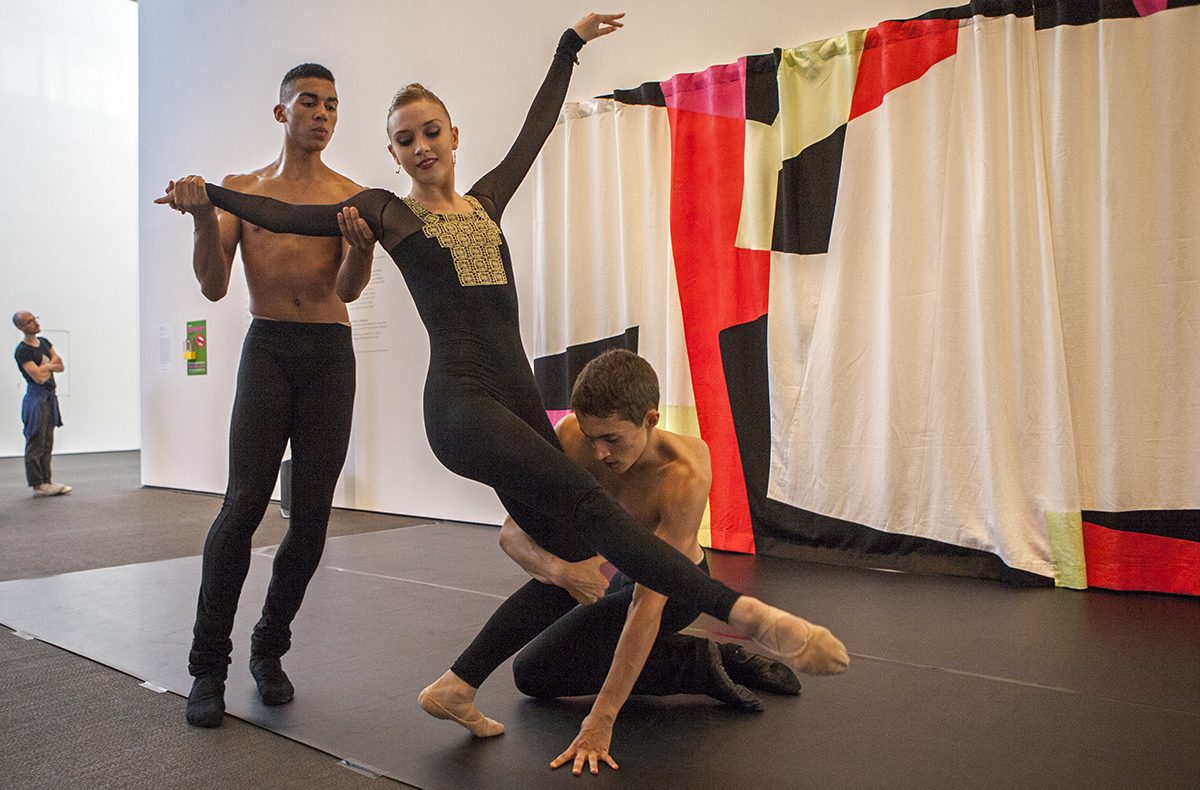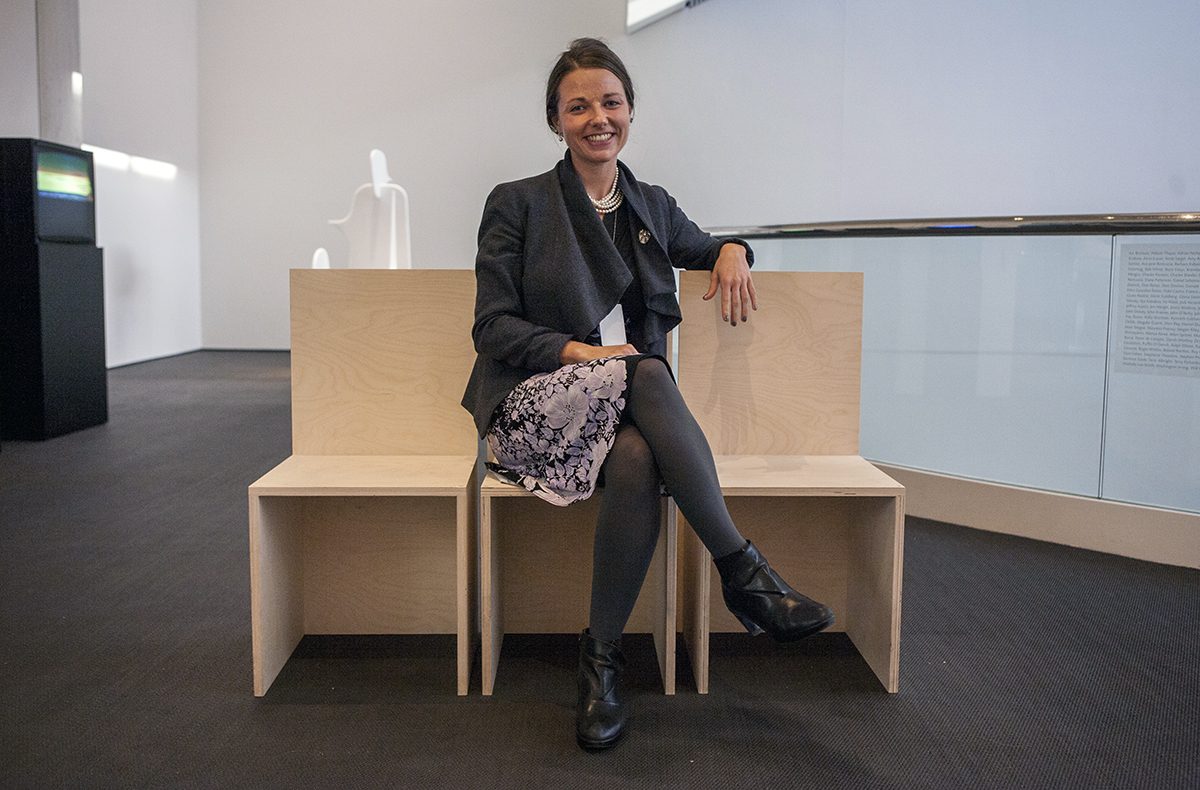Everyday Objects Become ‘Conversation Pieces’ at the MFA

Boston Ballet II dancers Serena Sovdsnes and Desean Taber perform a piece choreographed by principal dancer Yury Yanowsky in front of Sarah Crowner’s “Curtains (Vidas perfectas)” at the Museum of Fine Arts. / Photo by Olga Khvan
Beginning Wednesday evening, visitors at the Museum of Fine Arts can witness a monthly conversation take place between art and the human body.
Every third Wednesday through February, the museum will host two back-to-back performances by Boston Ballet II dancers, choreographed by principal dancer Yury Yanowsky, in front of “Curtains (Vidas perfectas)” by Sarah Crowner. The Brooklyn-based artist invites the presence of the human body into the creation of the piece, sewing together the collage of linens with her own hands, and then extends it by inviting dancers to use it as a backdrop for performances.
When MFA curator Liz Munsell chose to feature “Curtains” in “Conversation Piece,” a new exhibit that opened Friday in the Cohen Galleria of the Linde Family Wing for Contemporary Art, the idea to invite the Boston Ballet to collaborate was a no-brainer.
“This is a world-class museum. We exhibit the best of the best artwork, so we wanted to get the best of the best dance as well, and that’s why we went to the Boston Ballet,” she said. “Sarah really gave Yury the freedom to be able to do his work in an environment that’s new to him and to see what might come out of that. You pick collaborators that you know do amazing work, and then you let them go with their vision.”












The interdisciplinary collaboration between Crowner and Yanowsky is just one of the conversations in the new exhibition.
“Colloquium,” a marble sculpture by Pedro Reyes consisting of interlocking panels cut into the shape of blank speech bubbles, will serve as the centerpiece for a series of roundtable discussions organized in collaboration with Harvard’s Cultural Agents Initiative.
“It’s a sculpture that references a Noguchi coffee table, which is a modernist design that tends to be one of the more harmonious examples of combining form and function. But instead of making a regular platform for coffee and books, [Reyes] takes the platforms and cuts them in the shape of speech bubbles and creates a dynamic conversation in space that’s a platform for dialogue, not just a platform for objects,” Munsell said. “You realize right away that this piece is asking you to speak to it, and through it, and about it.”
While walking through the exhibit, Munsell also invites visitors to sit on plywood chairs by local artist Andrew Witkin, abandoning the usual “no-touching” approach associated with museums.
“Andrew Witkin makes us think about a chair as an art object, makes us think about how a chair can be a beautiful thing for our eyes to feast upon, and makes us think about how the placement of the chair affects the way we see a painting,” she said. “The whole exhibition is really kind of about people using objects in more creative ways—thinking about how we’re programmed to use them a certain way and breaking out of that.”
The idea of subverting the way we use everyday objects comes through especially well with the inclusion of “Somebody,” a mobile app by artist, writer, and filmmaker Miranda July that invites users to choose proxies to deliver messages to their friends face-to-face. The MFA is a hotspot for the app, and Munsell treats it as an artwork in the exhibition, hanging a museum label for it on the wall just as with all the other pieces.
By sparking conversation using the app, dance performances, and roundtable discussions, Munsell reinforces the original vision of the Cohen Galleria, which stands apart from the rest of the museum’s more conventional white-box galleries, as a highly social space within the MFA.
“I want people to feel like it’s their space, and they can hang out and come and sit in the Andrew Witkin chairs and watch the television piece and watch the dance performance,” she said. “Certain environments that are more formal don’t necessarily lends themselves to those kinds of open interactions just because of how they’re structured, but this gallery has such a vibrant feeling to it, and I wanted to create an exhibition that would speak to that and also encourage dialogue even further through the art.”








“Conversation Piece” will remain on view at the MFA through March. For performance and roundtable discussion schedules and more information, visit mfa.org.


